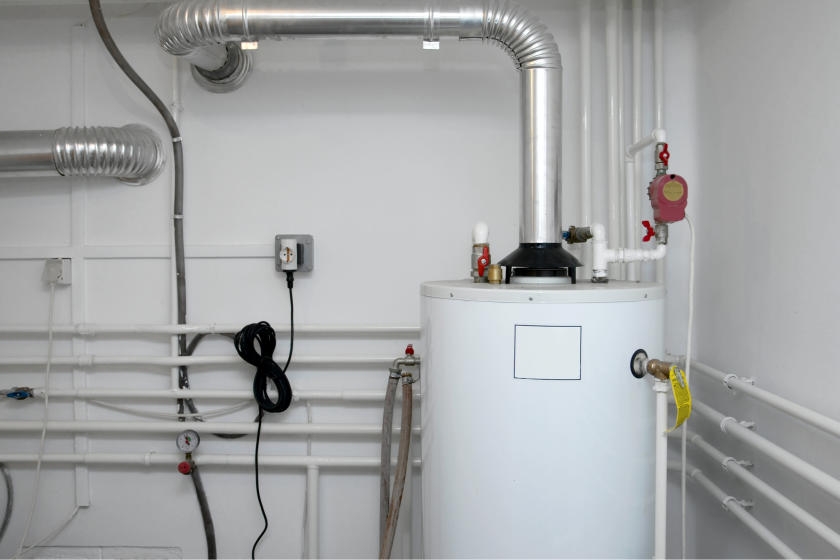Are you trying to find facts on How to Maintain Your Water Heater & Prolong its Life?

Hot water is crucial for day-to-day convenience, whether it's for a rejuvenating shower or washing dishes. To ensure your warm water system runs effectively and lasts longer, normal maintenance is key. This article provides sensible ideas and insights on just how to preserve your home's hot water system to prevent interruptions and expensive repairs.
Intro
Maintaining your home's warm water system may seem complicated, yet with a couple of basic steps, you can guarantee it operates efficiently for years to come. This overview covers everything from comprehending your warm water system to DIY upkeep tips and knowing when to call specialist aid.
Value of Maintaining Your Warm Water System
Routine upkeep not only prolongs the lifespan of your hot water system yet also ensures it runs effectively. Ignoring upkeep can result in lowered efficiency, greater power costs, and even premature failing of the system.
Signs Your Hot Water System Requirements Maintenance
Understanding when your warm water system needs interest can protect against major problems. Keep an eye out for signs such as irregular water temperature level, strange noises from the heating system, or rusty water.
Comprehending Your Warm Water System
Before diving into upkeep tasks, it's useful to recognize the basic components of your hot water system. Typically, this includes the water heater itself, pipelines, anode poles, and temperature level controls.
Monthly Maintenance Tasks
Regular month-to-month checks can aid capture minor issues prior to they rise.
Purging the Water Heater
Flushing your hot water heater eliminates debris build-up, boosting efficiency and prolonging its life.
Checking and Replacing Anode Rods
Anode rods stop rust inside the container. Evaluating and changing them when broken is essential.
Checking and Changing Temperature Level Settings
Changing the temperature level setups makes certain optimum efficiency and safety and security.
Do It Yourself Tips for Upkeep
You can do a number of upkeep jobs on your own to maintain your hot water system in top condition.
Checking for Leakages
Regularly examine pipes and connections for leaks, as these can result in water damage and greater costs.
Testing Stress Relief Valves
Examining the stress safety valve guarantees it operates correctly and protects against excessive stress buildup.
Shielding Pipes
Shielding hot water pipelines lowers heat loss and can conserve power.
When to Call a Professional
While do it yourself upkeep is helpful, some concerns call for specialist competence.
Complex Issues Requiring Expert Help
Instances include significant leakages, electric problems, or if your hot water heater is constantly underperforming.
Routine Expert Maintenance Advantages
Expert maintenance can include detailed assessments, tune-ups, and making sure conformity with security standards.
Conclusion
Routine maintenance of your home's warm water system is crucial for efficiency, durability, and expense financial savings. By complying with these suggestions and knowing when to seek professional help, you can guarantee a reliable supply of warm water without unexpected interruptions.
How to Maintain an Instant Hot Water Heater
Before tinkering with your hot water heater, make sure that it’s not powered on. You also have to turn off the main circuit breaker and shut off the main gas line to prevent accidents. Also turn off the water valves connected to your unit to prevent water from flowing into and out of the appliance. 2. When you’re done, you have to detach the purge valves’ caps. These look like the letter “T†and are situated on either side of the water valves. Doing so will release any pressure that has accumulated inside the valves while at the same time avoid hot water from shooting out and burning your skin. 3. When the purge valves’ caps are removed, you have to connect your hosing lines to the valves. Your unit should have come with three hoses but if it didn’t, you can purchase these things from any hardware or home repair shops. You can also get them from retail stores that sell water heating systems. Read the user’s manual and follow it to complete this task properly. When the hosing lines are connected, open the purge port’s valves. 4. You should never use harsh chemical cleaners or solutions when cleaning your unit. Make use of white vinegar instead. It should be undiluted and you’ll probably use about 2 gallons. 5. Now flush your water heater. This task should probably take about 40 minutes. We can’t give you specific directions for this because the procedure is carried out depending on the type, model and brand of your heater. With that being said, refer to the user’s manual. 6. When you’re done draining the unit, you have to turn off the purge port valves again. Remove the hosing lines that you earlier installed on each of the water valves. Put the valve caps (purge port) back in their respective places and be very careful so as not to damage the rubber discs that are found inside these caps. 7. Now that everything’s back in place, check your user’s manual again to find out how to reactivate your water heating system. 8. Once it is working, turn one of your hot water faucets on just to let air pass through the heater’s water supply pipes. Leave the tap on until water flows smoothly out of it. https://www.orrplumbing.com/blog/2014/september/how-to-maintain-an-instant-hot-water-heater/

As a passionate person who reads about Water Heater Maintenance Tips You Can't Afford to Forget, I imagined sharing that blog post was smart. So long as you enjoyed reading our blog entry plz don't forget to share it. Thank you for taking the time to read it.
Call Today